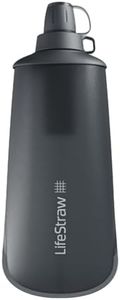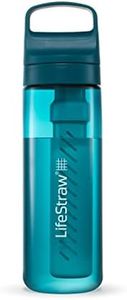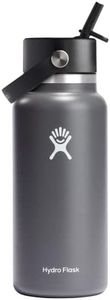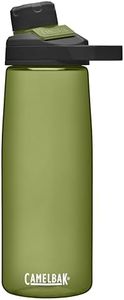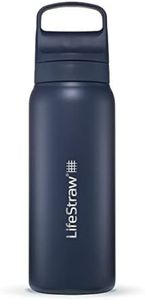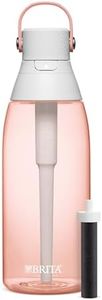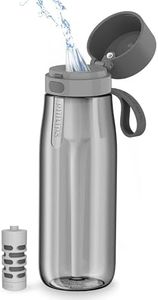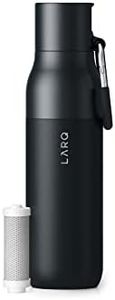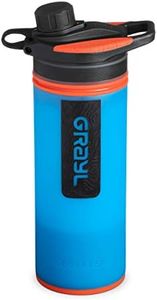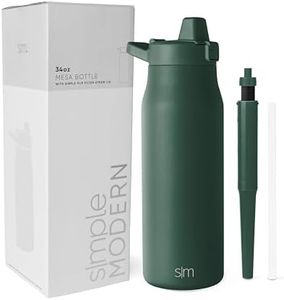We Use CookiesWe use cookies to enhance the security, performance,
functionality and for analytical and promotional activities. By continuing to browse this site you
are agreeing to our privacy policy
10 Best Filtered Water Bottles
From leading brands and best sellers available on the web.Buying Guide for the Best Filtered Water Bottles
Choosing the right filtered water bottle is essential for anyone who wants clean and safe drinking water on the go. Whether you’re heading outdoors, traveling, or just want to ensure your tap water is free from unwanted tastes or contaminants, a filtered water bottle can be a convenient and effective solution. The key is to understand the different features and specs so you can select the one that best fits your lifestyle and needs.Filter TypeThe filter type refers to the technology used to clean the water inside the bottle. Some filters are designed for basic taste improvement and removal of chlorine, while others can eliminate bacteria, parasites, or even viruses. Understanding what you want to filter is crucial: if you're mostly dealing with city tap water, a simple carbon filter might be enough, but for hiking or international travel, look for bottles with advanced filters like hollow fiber membranes or UV systems. Picking the right filter type depends on where you'll use the bottle most often and what contaminants you're concerned about.
Filter LifespanFilter lifespan tells you how much water you can purify before needing to replace the filter. This is important because a longer-lasting filter means less hassle and lower overall costs. Filter lifespans can range from about 40 to 150 gallons or more. If you're a frequent user or plan to rely on your bottle in remote areas, opt for higher capacity filters. Look at your typical usage—those who use filtered water bottles every day will benefit from longer lifespans, while occasional users may not need as much.
Bottle CapacityBottle capacity indicates how much water you can carry in one fill, usually measured in ounces or liters. It's important because it affects how often you'll need to refill. Smaller bottles (around 12-16 ounces) are lightweight and easy to carry but need more frequent refilling, while larger bottles (up to 32 ounces or more) hold more water but can be bulkier and heavier. Think about your routine: If you want a bottle for everyday commuting, a moderate size is convenient; for long hikes or travel, a larger capacity may be preferable.
MaterialThe material of the bottle impacts its durability, weight, and taste. Common options include plastic, stainless steel, and sometimes glass. Plastic bottles are lightweight and affordable but may retain odors over time. Stainless steel models are sturdy and can keep water cooler longer but are heavier. Glass offers pure taste but is less practical for outdoor use due to fragility. Choose a material that fits how and where you’ll use your bottle most—active users may prefer durable, lightweight plastics, while office or home use might suit glass or steel.
Ease of Use and CleaningFiltered water bottles differ in how easy they are to use and clean. Some require sucking through a straw, while others have simple pour-through or squeeze designs. Cleaning is important to prevent buildup; bottles with wide mouths and fewer parts are easier to maintain. If you want hassle-free daily use, select a design that's simple to operate and has parts that are easy to take apart and wash. This is especially important for those who will use the bottle in environments where cleaning might not be convenient.
Flow RateFlow rate describes how quickly water comes through the filter while drinking. Filters that remove more contaminants may slow the flow, making sipping effortful, whereas simpler filters allow a faster flow. If quick and easy drinking is important to you, or you find it challenging to suck through a straw, pay attention to flow rate. Consider your personal preference and expected use—for sports or heavy drinking, a high flow rate is best; for occasional sips, a slower rate may be acceptable.
